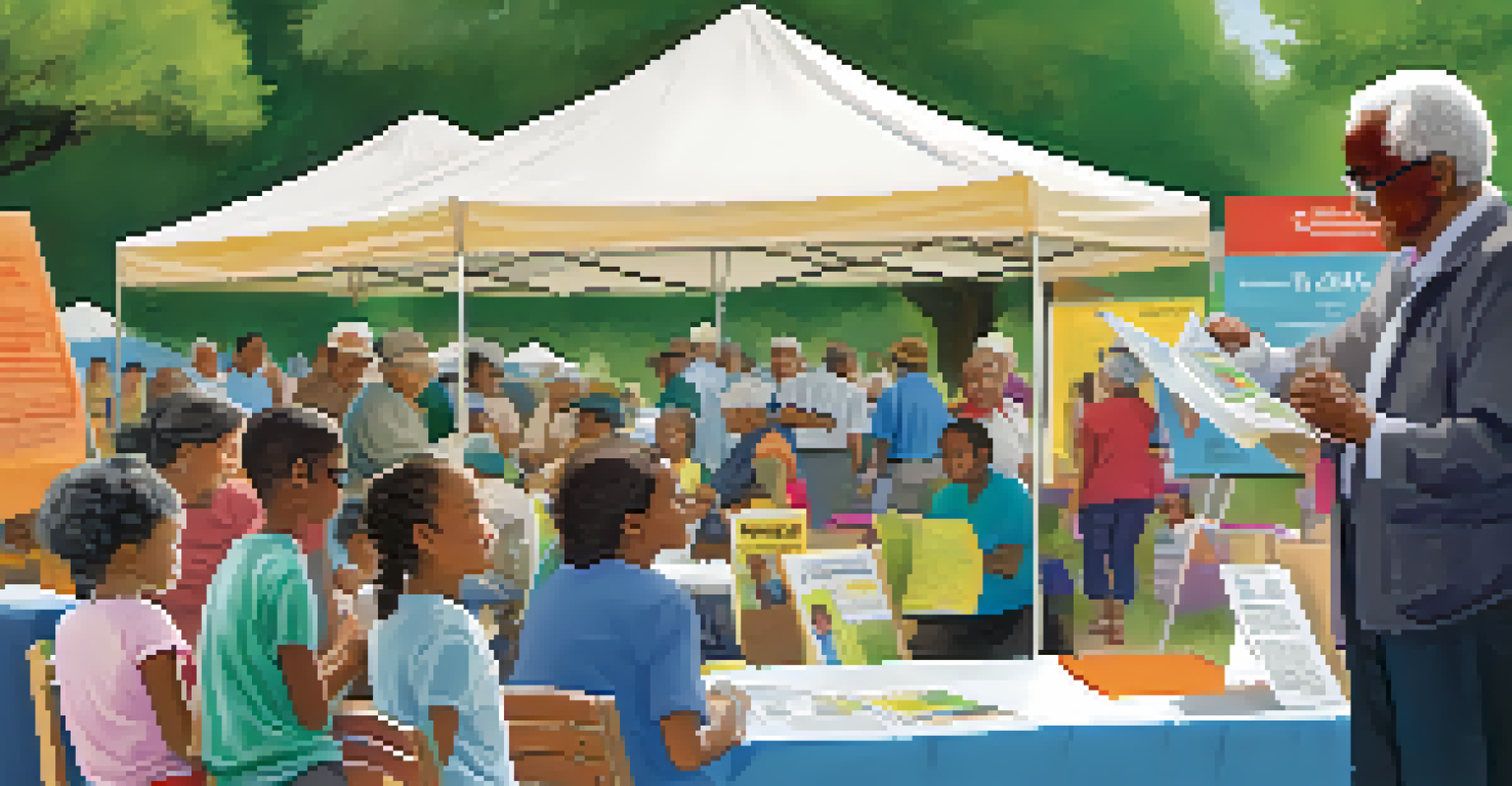Health Literacy: Bridging the Gap in Patient Communication

Understanding Health Literacy: What It Means
Health literacy refers to a person's ability to obtain, process, and understand basic health information and services. It's not just about reading pamphlets; it's about grasping the information needed to make informed health decisions. With low health literacy, patients may struggle to follow medical advice or comprehend their treatment options, leading to poorer health outcomes.
Health literacy is a shared responsibility that requires collaboration among healthcare providers, educators, and community organizations.
Imagine trying to navigate a complex city without a map or a GPS. That’s how many patients feel when faced with medical jargon and complicated instructions. When health information is presented in a way that’s too technical or overwhelming, patients can easily get lost, leading to anxiety and confusion about their health.
Improving health literacy involves making health information clear, accessible, and relatable. By simplifying language and using visuals, healthcare providers can help patients understand their health better, which ultimately empowers them to take charge of their well-being.
The Importance of Effective Communication in Healthcare
Effective communication is the cornerstone of a successful healthcare experience. It fosters a trusting relationship between patients and healthcare providers, enabling patients to feel comfortable asking questions and expressing concerns. When communication barriers exist, it can hinder patient engagement and lead to misunderstandings.

Consider a scenario where a doctor prescribes medication without ensuring the patient understands how to take it. If the instructions are unclear, the patient might take the wrong dosage, resulting in serious health risks. This highlights the crucial role clear communication plays in ensuring patient safety and adherence to treatment plans.
Health Literacy Empowers Patients
Understanding health information enables patients to make informed decisions about their care.
To enhance communication, healthcare providers can utilize teach-back methods, where they ask patients to repeat instructions in their own words. This not only reinforces the information but also helps identify any gaps in understanding, creating a more interactive and patient-centered approach to care.
Barriers to Health Literacy in Diverse Populations
Health literacy is not uniform; it varies significantly across different populations. Factors such as age, education, language, and cultural background can create barriers that affect how individuals understand health information. For instance, older adults may struggle with complex medical terms, while non-native speakers might find it challenging to grasp information presented in English.
Effective communication is the cornerstone of a successful healthcare experience.
Imagine a Spanish-speaking patient receiving medical advice in English without translation services. This can lead to confusion and misinterpretation, ultimately jeopardizing their health. Recognizing these barriers is essential for healthcare providers to tailor their communication strategies effectively.
By incorporating culturally relevant materials and offering translation services, healthcare providers can bridge the gap in health literacy. This ensures that all patients, regardless of their background, receive the information they need to make informed health decisions.
The Role of Technology in Enhancing Health Literacy
Technology plays a pivotal role in improving health literacy by providing easy access to information. From mobile health apps to online resources, patients can now find answers to their health questions at their fingertips. This accessibility empowers them to take an active role in managing their health.
Consider the rise of telemedicine, which has made healthcare more accessible to those living in remote areas. Patients can consult with doctors via video calls, eliminating the need for travel and making it easier to discuss health concerns. However, this convenience also comes with the responsibility of ensuring that the technology used is user-friendly and comprehensible.
Communication is Key in Healthcare
Clear communication between healthcare providers and patients enhances safety and treatment adherence.
As we embrace digital health tools, it's vital to create resources that are not only informative but also easy to understand. Healthcare providers should focus on developing content that resonates with patients, ensuring they can easily navigate their health journeys through technology.
Strategies to Improve Health Literacy in Patients
To effectively improve health literacy, healthcare providers can implement various strategies. One approach is to use plain language when discussing health information, avoiding medical jargon that may confuse patients. Simple language can significantly enhance understanding and retention of critical health messages.
Another effective strategy involves using visuals, such as diagrams and infographics, to convey complex information. Visual aids can help break down difficult concepts into digestible pieces, making it easier for patients to grasp essential details about their health.
Additionally, involving patients in their healthcare decisions can foster a sense of ownership and responsibility. Encouraging questions and promoting shared decision-making can create a more collaborative environment, ultimately leading to better health literacy and outcomes for patients.
The Impact of Health Literacy on Patient Outcomes
Health literacy significantly influences patient outcomes, including adherence to treatment plans, health status, and satisfaction with care. Patients with higher health literacy levels are more likely to understand their conditions, follow medical advice, and manage their health effectively. This can lead to improved health outcomes and reduced healthcare costs.
For instance, a patient who comprehends their diabetes management plan is more likely to monitor their blood sugar levels consistently and make healthier lifestyle choices. In contrast, a patient with low health literacy may struggle to adhere to the same plan, leading to complications and increased medical visits.
Collaboration Enhances Health Literacy
Working together, healthcare providers and communities can bridge health literacy gaps for diverse populations.
By prioritizing health literacy, healthcare providers can create a positive feedback loop where informed patients experience better health outcomes, leading to increased satisfaction and trust in the healthcare system. This ultimately benefits everyone involved in the patient care continuum.
Collaborative Efforts to Enhance Health Literacy
Enhancing health literacy is a shared responsibility that requires collaboration among healthcare providers, educators, and community organizations. By working together, these stakeholders can create comprehensive programs that address health literacy gaps within communities. This collaboration is vital for reaching diverse populations and ensuring that everyone has access to understandable health information.
For example, community health fairs can serve as platforms for providing health education and resources to underserved populations. These events not only raise awareness about health issues but also offer practical tools for improving health literacy, such as workshops and interactive sessions.

Moreover, training healthcare professionals on effective communication techniques can further strengthen these collaborative efforts. By equipping providers with the skills to engage patients meaningfully, we can foster a culture of health literacy that empowers individuals to take control of their health.